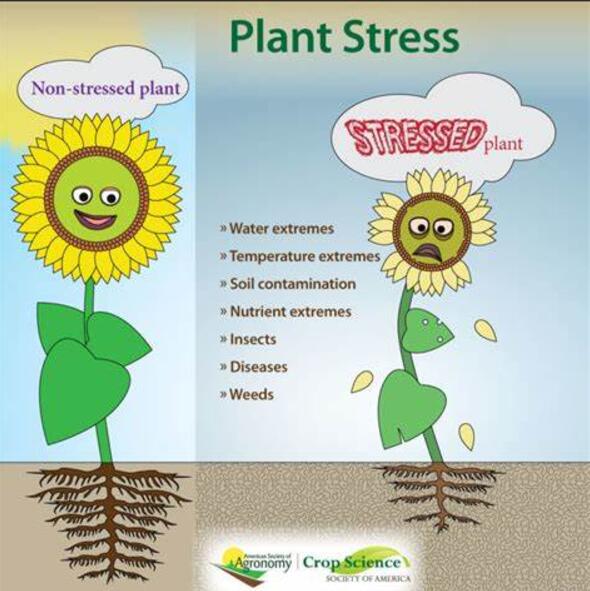Advancing lodging resistance in maize: Integrating genetic, hormonal, and agronomic insights for sustainable crop productivity
IF 6.8
Q1 PLANT SCIENCES
引用次数: 0
Abstract
Crop lodging, characterized by the bending or breaking of plant stems, poses a significant challenge to global food security by reducing crop yields and complicating harvesting processes. This review explores the factors influencing lodging susceptibility, including environmental conditions, genetic traits, fertilizer management, pathogens, and hormonal regulation. Recent advancements in maize research have uncovered critical genetic traits and elucidated the roles of key hormonal pathways—such as gibberellin (GA), strigolactone (SL), auxin, and ethylene—in modulating stem elongation, tillering angles, and root system architecture. These pathways collectively shape crop architecture, with GA and SL contributing to stalk strength, and auxin and ethylene enhancing root development and plant stability. Concurrently, agronomic interventions, such as optimized planting density and nutrient management, have improved stem integrity and mitigated lodging risk. By integrating genetic, hormonal, and agronomic knowledge, researchers have made remarkable progress in developing maize varieties that resist lodging, enhancing crop resilience and yield stability under various environmental conditions. Future research should focus on unraveling the molecular and genetic mechanisms underlying lodging resistance, addressing technical limitations in implementation, and advancing sustainable agricultural practices to secure global food production and ensure long-term productivity.

作物结瘤的特征是植物茎干弯曲或折断,它降低了作物产量并使收割过程复杂化,从而对全球粮食安全构成重大挑战。这篇综述探讨了影响作物抗倒伏性的因素,包括环境条件、遗传特征、肥料管理、病原体和激素调节。玉米研究的最新进展发现了关键的遗传性状,并阐明了关键激素途径(如赤霉素(GA)、赤霉素内酯(SL)、辅助素和乙烯)在调节茎伸长、分蘖角度和根系结构中的作用。这些途径共同塑造了作物的结构,其中 GA 和 SL 有助于增强茎秆强度,而辅助素和乙烯则能增强根系发育和植株稳定性。与此同时,农艺干预措施,如优化种植密度和养分管理,也改善了茎秆的完整性,降低了宿根风险。通过整合遗传、激素和农艺知识,研究人员在开发抗倒伏玉米品种方面取得了显著进展,提高了作物在各种环境条件下的抗逆性和产量稳定性。未来的研究应侧重于揭示抗倒伏的分子和遗传机制,解决实施过程中的技术限制,并推进可持续农业实践,以确保全球粮食生产和长期生产力。
本文章由计算机程序翻译,如有差异,请以英文原文为准。
求助全文
约1分钟内获得全文
求助全文
来源期刊

Plant Stress
PLANT SCIENCES-
CiteScore
5.20
自引率
8.00%
发文量
76
审稿时长
63 days
期刊介绍:
The journal Plant Stress deals with plant (or other photoautotrophs, such as algae, cyanobacteria and lichens) responses to abiotic and biotic stress factors that can result in limited growth and productivity. Such responses can be analyzed and described at a physiological, biochemical and molecular level. Experimental approaches/technologies aiming to improve growth and productivity with a potential for downstream validation under stress conditions will also be considered. Both fundamental and applied research manuscripts are welcome, provided that clear mechanistic hypotheses are made and descriptive approaches are avoided. In addition, high-quality review articles will also be considered, provided they follow a critical approach and stimulate thought for future research avenues.
Plant Stress welcomes high-quality manuscripts related (but not limited) to interactions between plants and:
Lack of water (drought) and excess (flooding),
Salinity stress,
Elevated temperature and/or low temperature (chilling and freezing),
Hypoxia and/or anoxia,
Mineral nutrient excess and/or deficiency,
Heavy metals and/or metalloids,
Plant priming (chemical, biological, physiological, nanomaterial, biostimulant) approaches for improved stress protection,
Viral, phytoplasma, bacterial and fungal plant-pathogen interactions.
The journal welcomes basic and applied research articles, as well as review articles and short communications. All submitted manuscripts will be subject to a thorough peer-reviewing process.
 求助内容:
求助内容: 应助结果提醒方式:
应助结果提醒方式:


